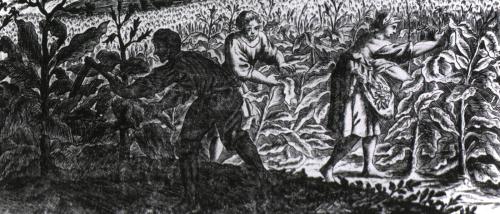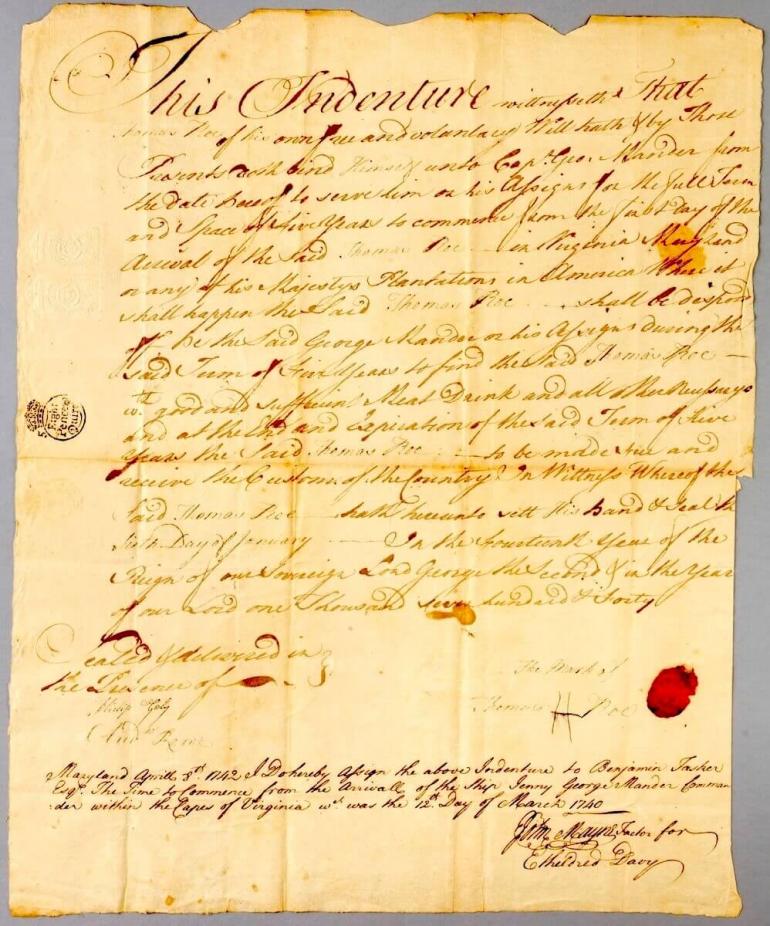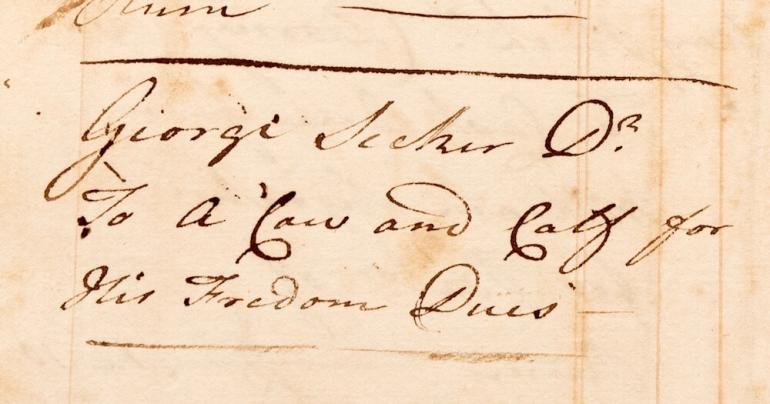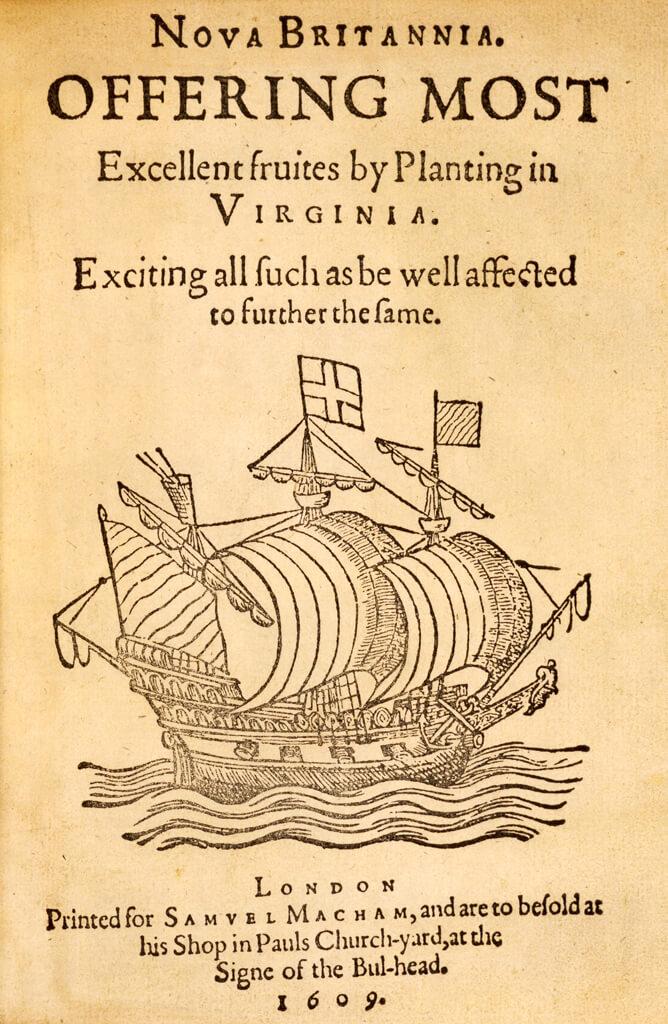White men and women, likely indentured servants, harvesting tobacco. From a German print made in Nurnberg, 1722. Courtesy of the National Library of Medicine.

Indentured Servants
Hoping to build a more prosperous life in the New World, men and women voluntarily entered into work contracts for the price of their transatlantic passage. In return for four to seven years of service, they would be provided with food, shelter, clothing, and “freedom dues,” consisting of land, tools, or livestock once their service was complete. Sometimes, an indenture could also command a yearly salary. Colonists found indentures to be among the most expensive types of labor, and indentures often encountered difficult working conditions.
English and Irish indentures were the main source of imported labor in the colonies until enslaved workers replaced them in 1690. Some sold their service from England, others made a deal once they arrived at an American port. Any who were left after a few days were auctioned off by the ship’s captain.
Seeking Skilled Workers
Dr. Carroll and his son Charles Carrol, Barrister, frequently asked their English agents to find trained craftsmen as indentures as there was a shortage of skilled workers in the colonies. These letters are part of the scant documentation the museum has on indentured servants.



